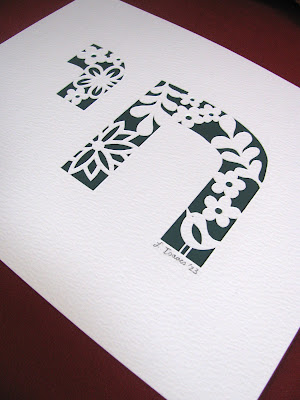I showed my customer's father-in-law with a camera in his hands. There is an aeroplane behind him, to represent his love for travel, and also some framed art and a sculpture. I added a 75 to the card too, to mark his age. Next to him is a spice box. Spice boxes are used at the havdalah ceremony performed at the end of Shabbat, to separate the holy day from the weekday (havdalah means "separation"). The ceremony involves lighting a special candle with several wicks, blessing a cup of wine, and smelling sweet spices. The spice box is passed around and everyone smells the aromatic spices as a way to uplift the spirit since the end of Shabbat is experienced as a sad moment.
My customer sent the card to France, where her father-in-law lives, thus the greeting "Joyeux Anniversaire", or "Happy Birthday". The traditional Hebrew blessing "120 עד" directly below means "May you live until 120". The Torah states that Moses died a the age of 120, at which age "his eye had not dimmed, and his vigour had not diminished". (Deuteronomy 34:7). The blessing therefore carries the implication that the receiver should have a long and fulfilled life.
My customer was very happy with the card. "I've been wanting to have an excuse to order a card from you for ages. Love your work!" she wrote to me.
In January 2023 another customer wrote to me and said "Unbelievably my uncle Joe is 100 in 3 weeks... it feels like the card is very important. So if you feel like making him one, I'd love that." She told me that Uncle Joe likes coffee and chocolate.I decided to show him holding a big birthday cake with lots of candles on it, though I didn't add 100! A hot cup of coffee is in front of him and some yummy chocolate behind him. A big red 100 marks his very special age.
"I absolutely love the card" my customer wrote to me, then sent me this wonderful photo of her and Uncle Joe together.













.png)

































































